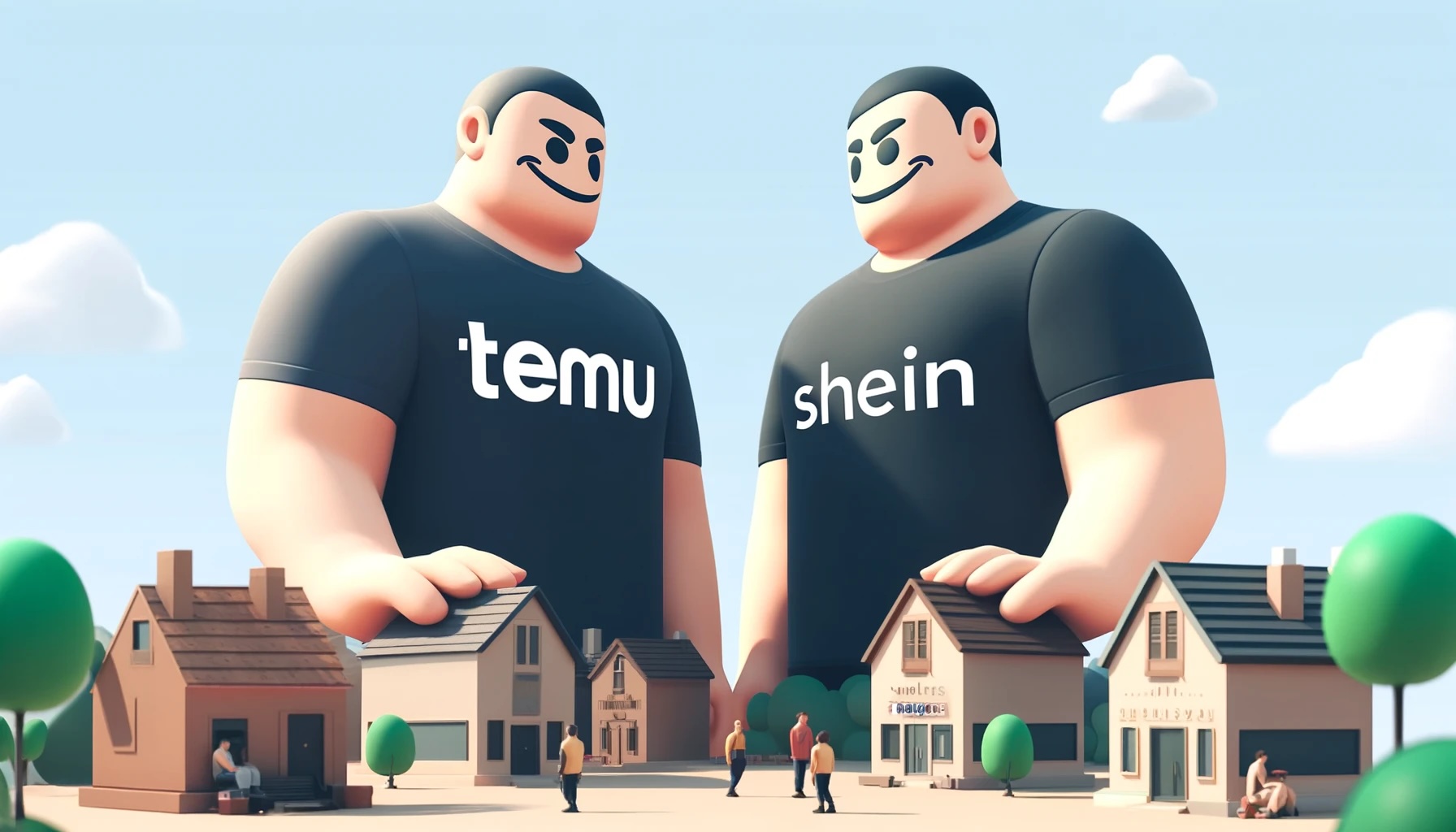Craft a Winning Amazon Strategy to Gain Market Share in the Arts, Crafts, and Sewing Category

The savior of every DIY-er and parent of bored kids is the Amazon Arts, Crafts, and Sewing category.
From household basics like scissors and tape to entire project kits, this category has everything you need to satisfy your inner artist, and for sellers in this category, that presents some unique opportunities—along with some unique challenges.
For many, it may seem like a difficult category to break into. Afterall, you’re likely to face a fair amount of competition—from Amazon’s own brands, other third-party sellers, and traditional brick and mortar stores—for staple items like paint sets or crafting scissors.
But hope is not lost!
Smart sellers have a real chance to grab market share and win customers away from even Amazon’s own brands—provided they have the right strategy.
So if you’re currently selling or interested in selling arts, crafts, and sewing supplies on Amazon, read on to get the expert insights on running winning PPC campaigns and optimizing your listings to win crafty shoppers.
Factors to Consider in Constructing Your Advertising Strategy
To say that there are a lot of factors to consider in your Amazon advertising strategy would be an understatement. There are hundreds of tiny decisions to be made constantly when you’re launching a new product or campaign.
But, zoom out for a minute.
Before we get into the fine-tuning, let’s take a look at the big picture by breaking down this category’s conversion rates.
| No. of Transactions | Avg. Price | Conversion Rate | |
| amazon.com | 4,093,252 | 13.35 | 21.5 |
| amazon.co.uk | 32,377 | 23.84 | 23.9 |
| amazon.de | 1,080 | 22.95 | 15.6 |
| amazon.fr | 965 | 8.27 | 7.6 |
| amazon.es | 597 | 18.14 | 12 |
When you’re focusing on overall conversion rates in a category, you’ll want to look at two main factors: 1.) Product Variations and 2.) Price Point.
- Product VariationsFrom yarn color to various paintbrush types—there will be a LOT of variation in this category. This is something you’ll want to keep in mind because the longer a shopper takes to weigh their options, the less likely that they’ll make a purchase
- Price Point: The average price in Arts, Crafts and Sewing in the U.S. marketplace is $13.35. Typically, higher product prices require a higher level of commitment, which slows down the buyer’s time to make a final decision. So, if you have a higher priced item, you’ll get a larger return on ad spend, BUT you’ll need to spend more of that return figuring out what converts.
This is a broad look at the category and the general obstacles to conversion. Now let’s look at some specific factors that will play a role in your sales and your advertising strategy.
Colors and Textures and Size, Oh My!: Overcoming Buyer Indecision
Understanding your customer’s journey will help you understand the buying triggers and motivations behind each purchase—from time to conversion to the number of drop-offs after an initial add to cart.
In this case, you’re going to need to become familiar with the factors that slow down decision time for shoppers in your category and how to overcome that hesitation.
As any savvy crafter will tell you, the success of a project rests heavily on getting your hands on the right materials—from finding the right paint brush to paint your masterpiece to choosing a fabric pattern that inspires your next sewing project. For sellers in the Arts, Crafts, and Sewing Category, that means there’s generally a LOT of variation in your products, and these decisions will slow down the buyer’s decision.
Fact: A high amount of variation in a type of product will make the decision-making process longer and lower conversion rates.
This means that the longer it takes to make that decision, the less likely that the shopper will commit to buying anything at all.
For example, notepads could have a longer decision time because of the variations in color, size, material, and so on, but for a product like tape measures, which are generally pretty standard, that decision time will be accelerated.
That said, there are ways to overcome some initial indecision.
High ratings and number of reviews can communicate that yours is a trusted product—giving customers the social proof they need to make a decision.
Tie Dye and Holiday Buys: Understanding Trends and Seasonality
For the most part, the Arts, Crafts, and Sewing category is protected from seasonal peaks and valleys in demand. There are, however, some exceptions to the rule.
Seasonality
Increased sales usually take place around winter holidays as these hobbyist supplies are often used to make gifts and make great gift items themselves.
Plus, certain subcategories can be very seasonally dependent. If, for example, you’re selling in the Party Decorations & Supplies, you’re probably already familiar with the times of the year when your products are at peak sales. (Dramatic spikes are to be expected around holidays like graduation, Christmas, & Halloween.)
You should also expect demand for crafting supplies to increase significantly in May-June, as the kids are out of school and have more free time, but the drop-off will be less dramatic.
Trends
Although there aren’t many innovations with these supplies (meaning you won’t see a lot of changes to staple products) there are still trends to watch in arts & crafts.
As with tie-dying, which became popular during the summer of 2020, some crafting items will experience sudden shifts in demand. Crafting kits—which make great gifts and come with all the supplies needed to create t-shirts, necklaces, or other crafty household items—are in general a good example of trend-dependant products.
So what does all this mean for your PPC strategy? Well, when building your PPC campaigns, you have to take the potential impact of seasonality and trends into account.
It’s better to have an understanding of what products work and when than to throw money away on products that just won’t convert at a certain time of year.
Trying to optimize for keywords when searches for that product are low will also land you in trouble. In that case, you’re probably better off waiting for the next appropriate season.
However, you’ll also want to be cautious once a product becomes too popular. When products are beginning to reach peak popularity, the market can get oversaturated quickly, increasing competition and decreasing your ability to grab market share.
Getting Crafty: Outmaneuvering the Competition
As we talked about in the beginning, in the Arts, Crafts, & Sewing category, you may end up facing some powerful competitors. You’ll need to take into account potential competition from top national crafting & party supply brands like Darice, Amscan, Hallmark, & Singer.
The good news is that although these brands take up primary positions on market share, for smaller brands trying to compete, there are ways to make your product more appealing and steal away customers from these giants. For example, high ratings and number of reviews can communicate trust in your product.
For brick and mortar competitors, there’s a good chance that staple items, like notepads or pencils are cheaper on Amazon than at your local grocery or craft store. When you take that into account (not to mention the time it takes to physically drive to the store and find what you’re looking for) many people prefer to look for their crafting supplies from behind their computer screen.
And finally, when it comes to competition from from Amazon itself, the company has two ways of entering a product space on its platform:
- Amazon-sourced/produced brands, one example being AmazonBasics
- Amazon-acquired brands, like home security company Blink
Amazon-sourced/produced brands tend to be somewhat generic, which presents an opportunity to smart sellers. It’s possible to make a play for market share and go up against Amazon as a third-party seller.
To grab victory directly from the e-commerce giant, you need to beat Amazon in quality.
Even with the Amazon name behind it, a product is only as good as the value it provides to its customers.
DIY PPC: Advertising Your Products in the Arts, Crafts, and Sewing Category
Now that we have a solid overview of the circumstances you’ll need to consider as a seller in the Arts, Crafts, and Sewing category, let’s narrow in on advertising strategy.
Now, in general, I recommend that 15-20% of your sales should come from paid advertising (although this is just a rule of thumb).
If, however, you’re promoting a new or relatively unknown product, it won’t have had enough time to perform well in organic rankings. In that case, it’s more likely that about 70-80% of those sales will come from paid.
Sales on very mature products, on the other hand, will come more from the organic side, partly because you’ll be able to transfer some of the learnings from your paid strategy into boosting your organic ranking. Plus, Amazon’s algorithm favors products with high conversions, so you’ll
organically climb in rank once you start making sales.
Here’s how organic and paid traffic breaks down in the Arts, Crafts, and Sewing category across Amazon’s platforms:
| Organic | Paid | |
| amazon.com | 59.0% | 41.0% |
| amazon.es | 93.7% | 6.3% |
| amazon.fr | 100.0% | 0.0% |
| amazon.co.uk | 94.4% | 5.6% |
| amazon.de | 100.0% | 0.0% |
You’ll notice that in marketplaces outside of the U.S., there’s little (or no) traffic driving to products in this category coming from the paid side. This may be because some countries and cultures can be more resistant to advertising. You may also see more restrictions on imports, which will drive U.S. product prices up.
So if you’re planning to sell in marketplaces outside the U.S., make sure you do your research.
Top 10 Keywords in the Arts, Crafts, & Sewing Category
As you already know, just as the right materials can make or break a project, the right keywords can make or break a PPC campaign.
While keyword strategy is a whole other topic, there are always a few category-specific considerations that I want to point out. First, let’s take a look at the terms that currently rank near the top in this category:
- Sewing Machine
- Ring Doorbell
- Diamond Painting Kits for Adults
- Scissors
- Acrylic Paint Set
- Yarn
- Washi Tape
- Thank You Cards
- Cricut
- Sewing Kit
As you can see, generic keywords (like scissors & thank you cards) will naturally rank more consistently. In this category, you’ll likely run up against a very long list of small competitors around the more generic keywords.
That’s why it’s so important to clearly define your value proposition to stand out in the crowd. You’ll also want to optimize your digital shelf so that repeat customers can find and choose your brand in the future.
Crafting the Perfect Listing
Speaking of standing out from the crowd, when a customer lands on your listing (through organic or paid traffic), it is imperative that you have done everything in your power to entice that shopper to buy.
A great listing helps the shopper to overcome any objections by providing clear, relevant information in an attractive format. With that being said, let’s take a look at a well-crafted listing:
Why it works:
- The title is SEO-focused while still attracting readers.
-
-
- The title includes high volume, relevant keywords.
- It includes examples of features (“Retractable Dual Sided”) and applications (“for Body Cloth Measuring,” “for Sewing”).
- The one potential pitfall is the lack of punctuation. Adding punctuation to break up the title for readability would help attract even more customers!
-
- The images used in this listing are high quality and well varied.
-
-
- It uses the maximum number (7) images.
- All images are high resolution.
- There is a great variety in the types of images used, from lifestyle to infographics, to show customers the benefits and features of the product and overcome potential objections in an aesthetically pleasing way.
-
- The list of features is complete and well structured.
-
- The listing addresses common concerns (“Retractable, Flexible, Durable”).
- Each point begins with a product benefit before specifications in full capitalization.
- This is a great way to draw attention to the beginning of the point while bringing attention to real-life relatable benefits!
- This listing offers a guarantee, which helps to overcome objections and differentiate itself from other similar products.
You’ll need to learn what your potential customer is looking to find or learn and what problems they’re trying to solve. That information will be the key to understanding their buying triggers.
Then, once you know the buying triggers behind your audience, that knowledge will allow you to make intelligent corrections along the way, ultimately leading to a well optimized, high-converting listing.
Final Thoughts
I hope this has helped you to identify the potential pitfalls—along with the amazing opportunities—for sellers hoping to gain market share in this category.
As always, our goal is to help people become category Kings and Queens and dominate their niche—whatever that niche may be. With that being said, if you want to make some major moves, we can help. Apply below.


